 The birth of newer saints will boost the morale of the nuns and clergy. In an age that criticises the Church’s educational business and proselytism, miracles by native saints can attract more Hindus. Under the fascination of miracles of saints, if Hindus are converted to Christianity, no one can blame it as a proselytising enterprise. That is the logic behind the elevation of people to sainthood in strategic regions. – Prof. C.I. Issac
The birth of newer saints will boost the morale of the nuns and clergy. In an age that criticises the Church’s educational business and proselytism, miracles by native saints can attract more Hindus. Under the fascination of miracles of saints, if Hindus are converted to Christianity, no one can blame it as a proselytising enterprise. That is the logic behind the elevation of people to sainthood in strategic regions. – Prof. C.I. Issac
The Vatican in its third millennium is committed to plant its Cross over Asia as was done in previous millenniums over Africa and the Americas. In the case of Asia, the Church generally signifies India and particularly Tamil Nadu, the most vulnerable place of Hindu social formations of India (the reasons for this vulnerability are not the subject of this article).
Earlier in the seventeenth century, Roberto de Nobili of Montepulciano, Tuscany, a padre of the Society of Jesus, in his zeal to convert the Brahmins adopted their mode of life and so had to cut himself off completely from intercourse with fellow missionaries. Through fraudulence, he depicted the entire Hindu tradition as the corrupted form of Christianity. With this end he claimed to have discovered a fifth Veda which he called Jesus Veda. He worked in Madurai, Mysore, and southern Karnataka till old age and almost complete blindness compelled him to retire to Mylapore.
Proselytism enterprises in the Tamil south attempted to baptize Thiruvalluvar and the Kural. In 1969, M. Deivanayagam with the blessings of the Church published a book in Tamil to portray Thiruvalluvar as the disciple of St. Thomas. The timely interference of national forces aborted the vicious and malicious designs of Arulappas and ‘Paul Iyers’ like Jayachandras of modern south India.
The forces of the Conversion Lobby is now experimenting with another strategy to bestow the halo of sainthood upon a traitor, Neelakanta Pillai, of the kingdom of Travancore. This 18th century convert is now being repackaged as ‘Devasahayam Pillai’ in the absence of any proper historical evidence, in order to build an icon of martyrdom to the cause of ‘faith’.
According to the Catholic Church of Kanyakumari district, Neelakanta Pillai was an employee in the palace service of Travancore. Here it may be appropriate to quote Swami Vivekananda: “For every conversion that is lost to Hinduism, it is not just one lost, but one more enemy to Hinduism”.
During the Second Vatican Council (11 October 1962 to 8 December 1965) under pontiffs John XXIII and Paul VI, two thousand saints were removed from the nomenclature of ten-thousand-odd saints of the Catholic Church on the ground that there was insufficient evidence to their continuation in the galaxy of saints.
Pope John Paul II was known for his agenda of elevating 482 persons to sainthood; about 300 were put on a pedestal of different stages on the road to the final destination of sainthood. It was an all time record in the long history of 261 pontiffs so far. But his successor Benedict XVI is striving to overtake him. Yet Fr. Damien, who died on 15 April 1889 and served the ostracised lepers of Molokai in Hawaii, waited until 11 October 2009 in a long queue for sainthood. Fr. Damien’s elevation to sainthood is not beneficial to the Church from the conversion point of view.
The two thousand-odd saints had a purpose in the last millenniums and were served well. But in the changed scenario the Church has no use for them and so they were ousted from the pantheon of saints! Now the Vatican is running after Mother Teresa-like pragmatic saints who have acquired socio-political relevance in the contemporary world order. Several ‘removed saints’ are still adored in the Catholic churches of Kerala.
One such saint is St. George (Gee Varghese in Malayalam); he is dear to the Church materially and mystically and that is why the Church of Kerala renounced the dictum of the pontiff. St. George of Edthuva and Aruvithura are indivisible in Kerala Catholic faith because this saint is acceptable to the Hindus, especially from southern Tamil Nadu, and hence he is a money-minter for the Church. His morphology is rather more Hindu than Occident; hence his acceptance. Above all, the Church in an era of globalisation is more pragmatic than any business firms of Kerala.
The focus of this study is the authenticity of the story of the execution of Neelakanta Pillai alias Devasahayam Pillai of Nattalam in the present day Kanyakumari district of Tamil Nadu by the Travancore Raja in 1752 on the ground that he embraced Christianity. The Catholic Church alleges that the Brahmin chief priest of the kingdom and certain members of the royal family along with the Nair jati levelled false charges of treason against Devasahayam Pillai before the Dalawa (Dewan).
According to the advocates of Neelakanta Pillai’s sainthood, his conversion to the Christian faith generated intolerance amongst the upper jati Hindus / Nairs, thus they conspired against him; hence the case of treason. There are various other stories in circulation concerning the poignant end of Neelakanta Pillai. One story says that during the reign of Ramayyan Dalawa, authorities framed charges against him: disclosing of state secrets to rivals and Europeans. Dalawa ordered the execution of Neelakanta Pillai and he was taken on the back of a buffalo to Kuzhumaikkad where he was executed on charges of sedition.
Another story is that in 1752, the King and his Dalawa ordered his deportation from Travancore into the Pandya country at Aralvaimozhy. There, he was let off in the forest where he began deep meditations and people from adjacent villages began visiting him as a holy man.
Here the pertinent questions are whether the practice of religious persecution existed in the State of Travancore; whether Neelakanta Pillai converted to Christianity and specifically to Catholicism; whether a man from Nair jati embraced the Latin Catholic Church; if he converted to Catholicism was it possible to remain in the palace service, and what is the immediate purpose of elevating him to the sainthood.
P.K. Balakrishnan, author of Jati Vyavasthithiyum Kerala Charithravum (Mal. pub. 1983, pp 342 ff), makes it clear that even though the social relations of Kerala were based on jati / birth-based discriminations, religion was not a matter of social concern. The great poet Vallathol attested to the harmonious co-existence of diverse religions as Kerala’s time tested tradition. Krishna Chaitanya, a noted social historian of Kerala writes: “The Keralite, whatever his religion, grows up in a multicultural milieu, which has been an established reality in the land for centuries” (Kerala, p 62).
Recently the Dalai Lama, while attending a Christian function at Cochin, attested to the age-old Indian tradition of equal respect for all religions—and not religious tolerance—in the following words: “India exemplified how different religious faiths and traditions could live in harmony and she is the noble paradigm of spiritual harmony and coexistence” (Matrubhoomi Daily, The Hindu, Deccan Chronicle, Cochin 26 November 2012).
This traditional characteristic of Kerala society was acknowledged by an eminent historian: “The Hindu rulers of ancient Kerala followed a policy of enlightened religious toleration. … The progress of the faith was, in many respects, due to the tolerant policy pursued by the rulers of Kerala….” (A. Sreedhara Menon, A Survey of Kerala History, 1970, pp 92, 104).
Above all, Marthanda Varma’s broadmindedness to accept De Lannoy, a Flemish Christian, as commander-in-chief of his forces is sufficient and self-explaining testimony to the general Hindu social psyche of the day. In short, Kerala’s track record in the history of harmonious coexistence of religions is exemplary of the broad Hindu outlook since the dawn of its civilization to the present. Hence a story of Devasahayam Pillai’s tragic end is fictitious and un-historic.
As Neelakanta Pillai hailed from an aristocratic Nair household of 18th century Travancore and was well placed in the palace service, the genuineness of the story of his conversion to Christianity is unbelievable and fabulous in the history of proselytism of Kerala. Social disability attributed to certain jatis by smriti rules, the ruling ideology of ancient Kerala, is the prime villain responsible for the mass exodus of certain jatis to alien religions in the changed political scenario.
In this situation, the conversion of a Nair before European domination over Kerala’s political life is an absurd story and an act of building castles in the air. If for the sake of argument one accepted the conversion of Neelakanta Pillai to Latin Catholicism, the question of his social acceptance in the highly jati conscious society is vital. One has to keep in mind that the Latin Catholics, even today, are untouchables to the Syrian Catholics of Kerala. Conversion would make his social rank in the mlechha (out cast) category and thus he would miss his socio-political acceptance automatically.
Thus, without any external intervention, all his social status and prerogatives along with his employment in the palace service would be automatically terminated. Hence there was no room for false fabrication of charges by a Brahmin priest against him. While in the palace service, Neelakanta Pillai was very clearly not converted to an alien faith.
A 20th century story associated with Neelakanta Pillai’s conversion is narrated by C.M. Augur in The Church History of Travancore (1902, Kottayam). It explains the story without any relevant documentary evidence. This is a deliberate conspiracy plotted by the Church.
Similarly, the Malayalam literary magazine Bhasposhini (Vol. XXVIII, No. 7, 2004), part of the Christian-owned Malayala Manorama group, published the story of the conversion of one Ramavarma, heir-apparent to the Cochin royal family, to Christianity under the influence of Dr. Herman Gundert, a Protestant missionary in 19th century Malabar. The cover story says he received baptism from Dr. Herman Gundert on 3 September 1856 and assumed the name Yakoob (Jacob) Ramavarman (1814-1858).
The story of his conversion is presented to the reading public in a more camouflaged manner by the magazine, which debates the question of the first autobiography in Malayalam and concludes that Yakoob Ramavarman is the first autobiographer of the Malayalam language. This is a paradox which was not noticed by three outstanding literary historians of Kerala, Ulloor S. Parameswara Iyer, T.M. Chummar and Dr. K.M. George, but was discovered by Bhasposhini in its cover story. The irony is that T. M. Chummar and Dr. K. M. George are upper jati Christians of Kerala. The purpose of the debate over the nonexistent and unpublished autobiography was to give stimulus to the enterprise of apostasy in Kerala.
Anyway, the attempt did not produce any desired output. The reason is that Gundert was a Protestant and in Protestantism saints have no relevance; hence making and marketing Yakoob Ramavarman as a saint turned unfeasible for the time being. In short, the proselytism entrepreneurs of India who cast its covetous eyes over the unorganised Hindus are always eager to experiment newer and newer tricks to trap them and has a periodic recurring character (sambhavami yuge yuge).
Neelakanta Pillai’s alleged conversion to the Catholic faith under the influence of De Lannoy was another serious contradiction that persists in the fabrication of this story, which acquired impetus in the 1980s. Those who fabricated the above story did not know the then persistent politico-religious relations of the West.
De Lannoy was a Flemish subject and [naval commander of the Dutch East India Company] in communion with the Protestant Church. When the Dutch captured Fort Cochin, they occupied St. Antonio Church of the Catholics, where Vasco da Gama was buried, and changed it to St. Francis Church. Now this church belongs to CSI, a Protestant denomination. Later, the British occupied it and at the time of independence they handed it over to the CSI.
In Europe at the time of Neelakanta Pillai, the Catholics and Protestants were in a belligerent mood. Therefore De Lannoy would never allow Neelakanta Pillai to receive baptism from the Catholics. Moreover, at Udayagiri Fort, De Lannoy maintained a Protestant church. Above all, the Dutch were the gurus of conversion in those days, so why would De Lannoy send Neelakanta Pillai to the Catholic fold for a simple ritual of baptism?
From the days of Roberto de Nobili (1606), the papacy was enthused to convert the Tamil south but failed. In recent times it has attempted to hijack the great saint Thiruvalluvar, the spinal cord of Tamil identity, who lived a century before Jesus, by forging history! The church is peddling the story that Thiruvalluvar met Saint Thomas at Mylapore and converted to Christianity. This did not go down well and so now it is experimenting with Devashayam Pillai. The archival sources remain silent about Neelakanta Pillai’s conversion or execution.
The birth of newer saints will boost the morale of the nuns and clergy. In an age that criticises the Church’s educational business and proselytism, miracles by native saints can attract more Hindus. Under the fascination of miracles of saints, if Hindus are converted to Christianity, no one can blame it as a proselytising enterprise. That is the logic behind the elevation of people to sainthood in strategic regions.
In an age of sons of the soil, such a strategy may yield better. The offertory of a Hindu to a wayside chapel of a designated saint does not fall in the category of an income-generating business, like educational institutions or hospitals. This benefits the Church in two ways—it can continue conversion and amass money without public censure. In an age of liberalisation and globalisation, marketing strategies are essential for the faith also. Hence European churches are using the potential of the Indian Church for outsourcing Holy Mass and other sacraments. In the marketability perspective, Kerala waysides are perfect spaces for the sale of saints and their miracles. – Vijayvaani, 5 Dec. 2012
› Dr. C.I. Issac is a retired Professor of History and lives in Thiruvananthapuram.
See also
Filed under: india, vatican | Tagged: blood libel, catholic church, christian martyrs, conversion, devasahayam pillai |


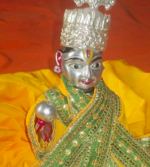






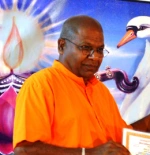

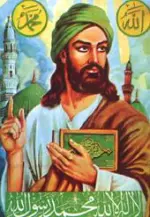
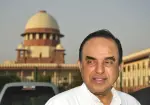
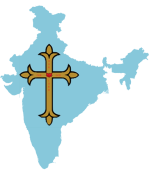



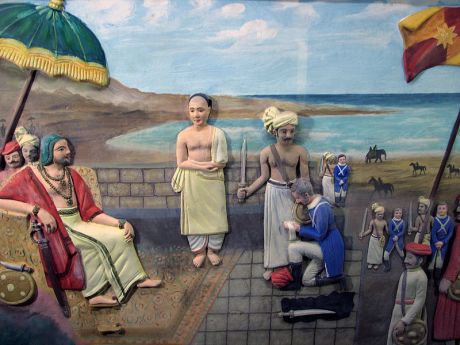

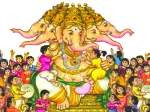



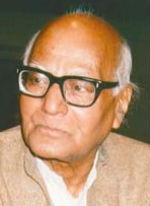






Devasahayam Pillai becomes 1st Indian layman to be declared saint by Pope – PTI – Firstpost – Vatican City – 15 May 2022
Vatican city: Devasahayam Pillai, who embraced Christianity in the 18th century, was on Sunday declared a saint by Pope Francis at the Vatican, becoming the firsFrancis canonized Blessed Devasahayam Pillai along with nine other Blesseds during a Canonisation Masst Indian layman to be canonized.
Devasahayam was recommended for the process of Beatification by the Vatican in 2004, at the request of the Kottar diocese, Tamil Nadu Bishops’ Council and the Conference of Catholic Bishops of India.
Pope Francis canonized Blessed Devasahayam Pillai along with nine other Blesseds during a Canonisation Mass in St Peter’s Basilica in the Vatican.
LikeLike
Don’t Hindus ever learn …
Prime Minister Modi visited Pope Francis at the Vatican on Oct. 30th, gifted him a silver candelabra for his altar and invited him to India. In return Francis gave Modi a bronze plaque which read: “The desert will become a garden.”
This was the first gentle slap the Jesuit-trained pope gave the so-called Hindutva prime minister. The message of the bronze plaque is a metaphor for the conversion of India (the desert) to Christianity (the garden).
The second papal slap was harder. After Modi left the Vatican, the Congregation for the Causes of Saints announced a program for the canonisation of the “blessed martyr” Devasahayam Pillai, to take place at the Vatican on May 15, 2022.
Devasahayam has been a controversy in South India since he was made a “blessed martyr” by Pope Benedict in 2012. Even if he really did convert to Catholic Christianity—his Christian mentor was a Dutch Protestant—his martyrdom at the hands of the Raja Marthanda Varma government is doubtful to say the least. All leading Kerala historians deny that it ever happened.
So what is the Pope’s object of recognising Devasahayam a ”blessed martyr” of the Catholic Church at this time? Of course, it is to present Hindus as religious bigots, prejudiced and murderously intolerant of Christian converts.
In fact the alleged martyrdom of Devasahayam Pillai is a carefully concocted fable, a blood libel on the Hindu community by the Indian Church, even as is the alleged martyrdom of the apostle St. Thomas in 72 CE.
Is Prime Minister Modi and Sarsanghchalak Mohan Bhagwat so self-absorbed and naive not to see this?
If Modi thinks he can out-maneuver the Pope, he is gravely mistaken. The Pope is a master of sophistry and belongs to a 2000-year-old tradition of fabricated martyrs and deceit. He will make a laughing-stock of Modi and Bhagwat and the BJP government that hosts his visit to India.
Remember how Pope John Paul II made India a platform for his exhortation Ecclesia in Asia, the sermon being a blueprint for the expansion of the Roman Catholic Church in Asia.
Don’t Hindus learn anything from past experience?
And what about demanding a papal apology for the Goa Inquisition?
LikeLike